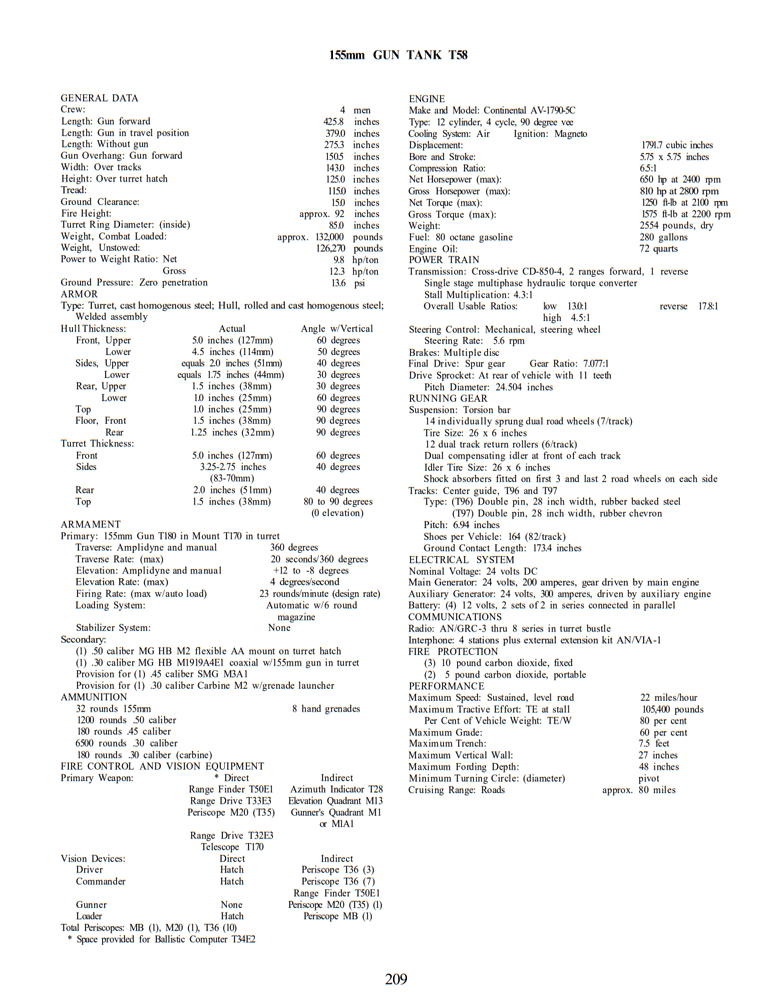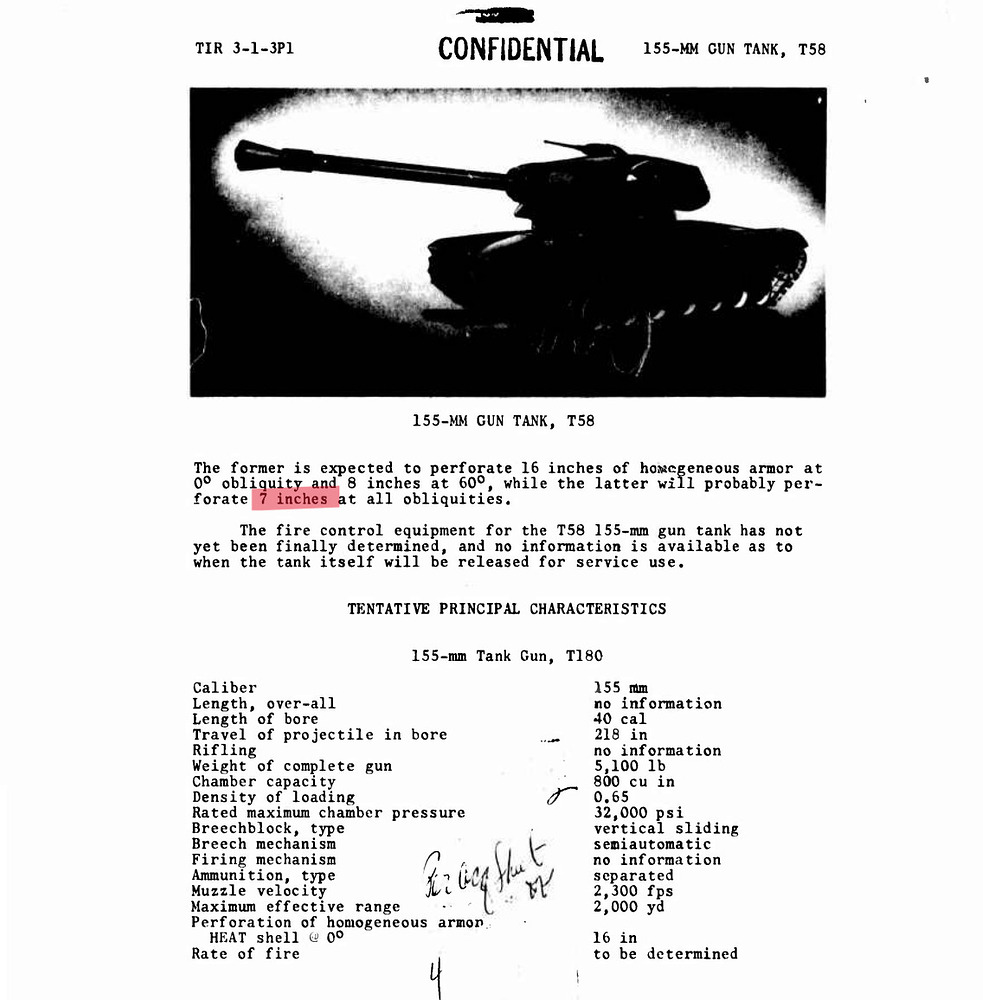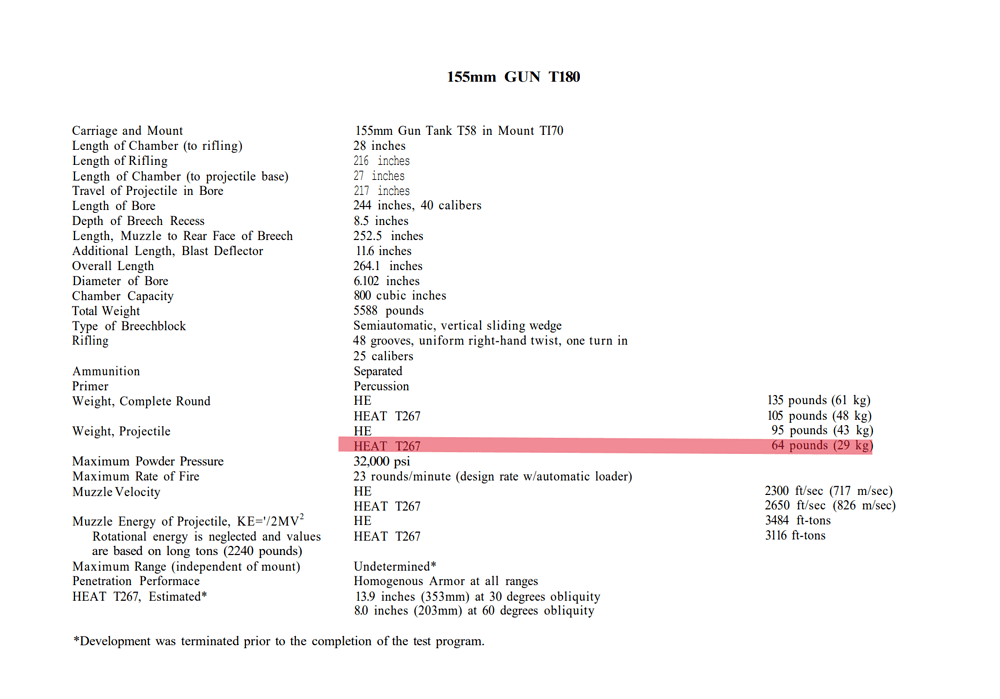The time that the test server will be open is running out, and the actual implementation is approaching, so we would like to summarize our final improvements and suggestions.
If displayed as is, it would be long and difficult to read, so we made it foldable.
Armor thickness
The current T58 has turret armor that is 90mm thick all around, making it more resistant than necessary to attacks from the side and rear, but the roof is less than 30mm thick, making it extremely vulnerable to attacks from above by aircraft and helicopters.
Therefore, as others have suggested, it is necessary to change the armor thickness to that shown in the documentation.
I’ve quoted the image for reference, but for more details please see the article by the person who suggested it using the link provided.
If these historical changes are implemented, the tank will be much more protected than it is today. Combined with the rounded armor shape, it will be difficult for standard APCBCs to penetrate, and in some cases it will be able to defend against APDSs, which are weak against the original sloped armor.
Historical ammunition
The current ammunition used by the T58 is the T267 HEAT round and the T152 HESH round, but there are still some unresolved issues.
First, regarding the T152 HESH round, although some modifications have been made, the muzzle velocity is still 563 m/s and the penetration is still 203 mm. However, according to the documentation, the muzzle velocity is 2300 fps = 701 m/s and the penetration is 7 inches = 177 mm, so changes are needed.
Next, the T267 HEAT round has a muzzle velocity of 826 m/s as per the document, but the shell weight is still too light at 18.9 kg. The document states it is 29 kg, so this needs to be corrected, but in that case the explosive charge and damage coefficient will need to be increased accordingly. Proposals for the T267 HEAT round have been made many times before, but since there is not enough time to implement it, it is best to simply use the data from the existing spin-stabilized HEAT rounds for 150 mm calibers.
The candidates are as follows, all of which weigh close to 29 kg.
-
15cm I.Gr.39 HI/A (The shell weighs 24.6 kg and contains 4.2 kg of explosive.)
-
152mm BP-540 (The shell weighs 27.4 kg and contains 3.8 kg of explosive.)
If the explosives in the above candidate shells were changed to Composition B or Octol, which were used by the US Army at the time, the amount of explosive would be over 5 kg of TNT. Since the damage coefficient of HEAT rounds in the game changes depending on the amount of explosive, it would be necessary to increase the damage coefficient from the current setting.
The current damage coefficient is set to 400, as per Datamine.
However, since HEAT rounds with a TNT equivalent charge of 4kg or more are often set to 600, it would be reasonable to increase the damage coefficient of the T267 HEAT round, which weighs over 5kg, to around 600-700.
Finally, regarding the addition of HE. At present, the T58 only has HESH and HEAT, but according to the documentation, HE is mentioned. This is something that several people have pointed out in the past, so it seems appropriate to add it.
Since the type of HE is not specified, we can only guess based on the information that the shell weighs 43 kg, but it is likely to be the widely used M107 or the older M102 (shell weighs 43.1 kg and contains 7.06 kg of TNT). The muzzle velocity is also said to be 717 m/s.
Autoloader
The T58 heavy tank is equipped with an automatic loading device by using an oscillating turret, achieving a loading speed of 3.8 seconds, which is faster than even modern 155mm self-propelled howitzers. This is extremely powerful in the BR8.0 environment, and a loading speed of 3.8 seconds is a major advantage compared to vehicles of the same or higher rank.
However, if multiple improvements are made to armor thickness, ammunition, etc., the advantage will become excessive at BR8.0.
To prevent this, we propose showing the autoloader in pink, setting it to take damage as a module, adjusting the reload time to 4.0-5.0 seconds, and improving the speed at which ammunition is replenished in the autoloader.
This will improve the overkill and ammo reload times for autoloaders, which were previously quite cumbersome.
Since the implementation is approaching, we have summarized the main improvements and suggestions this time. Although there is only a short time until implementation, we would like to continue discussing with you all until the end to make the T58 even better.


